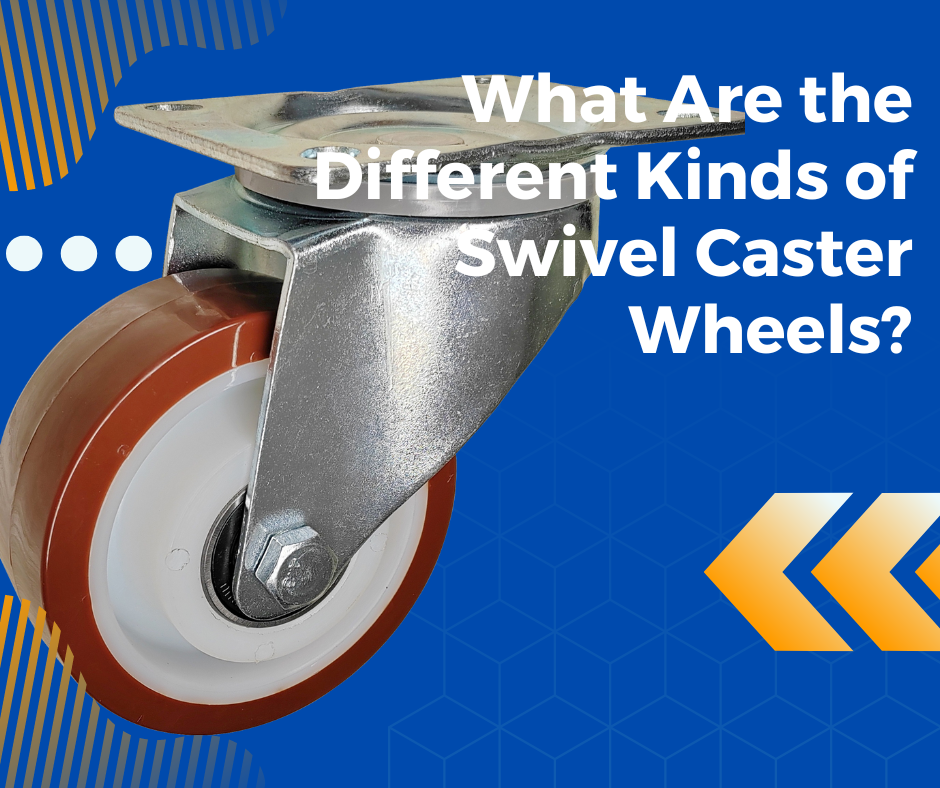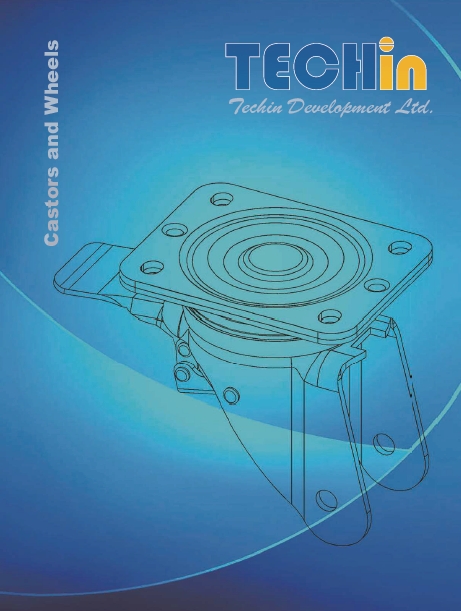In the realm of mobility, casters play an indispensable role in making objects easier to move. The hard or soft caster you choose can have a significant impact on mobility, floor condition, workload handling, and overall operation efficiency. This guide will delve into the world of casters, contrasting hard and soft options to help you make an educated decision for your specific applications.
Hard Casters
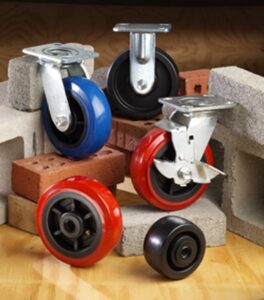
Construction and Materials:
Hard casters are constructed from a variety of robust materials such as polypropylene, nylon, steel, or phenolic resin. This selection caters to a range of requirements, from durability to temperature resistance, and offers high performance in demanding environments.
Ideal Use-Cases and Benefits:
Hard casters are your go-to for industrial settings where strength is a prerequisite. They’re built to withstand harsh conditions, such as exposure to high temperatures, chemicals, and heavy loads. Their smooth-rolling nature makes them optimal on soft, uneven, or pliable surfaces like soft tile, carpet, and outdoor terrains.
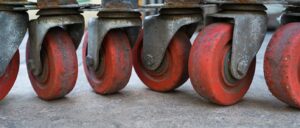
The Primary Advantages of Hard Casters Include:
- Heavy-Duty Use: Built to support and move heavy equipment effortlessly.
- Longevity: These casters are made for wear and tear, offering a longer service life than softer options.
- Low Rolling Resistance: They make pushing and controlling heavy loads easier, saving on effort and energy.
Potential Drawbacks:
While hard casters are advantageous for industrial use, they do have some drawbacks:
- Floor Damage: Their strength can be a downfall for floors, possibly causing scratches and wear on sensitive surfaces.
- Noise: Hard wheels do not absorb sound, which can result in noticeable noise during operation.
- Limited Traction: On slick surfaces, hard casters may not grip as well, raising safety concerns in certain environments.
Soft Casters
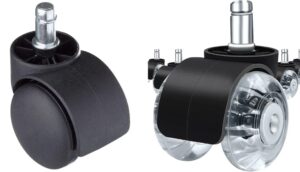
Construction and Materials:
Soft casters are made with materials that offer shock absorption qualities. Rubber, polyurethane, and thermoplastic rubber are common choices. These materials are chosen for their elasticity, noise reduction, and floor preservation attributes.
Ideal Use-Cases and Benefits:
For settings that demand silence and floor protection, such as office spaces and medical facilities, soft casters shine. They’re adept at smoothly traversing hard surfaces like hardwood floors, laminate, and tile without leaving a trace.
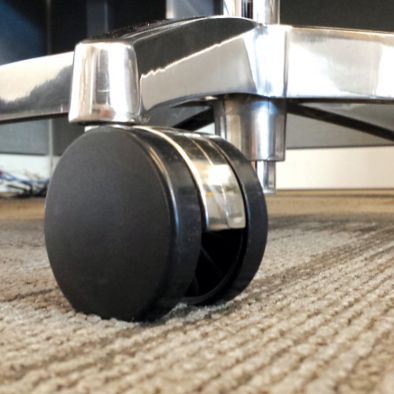
Their most notable benefits are:
- Floor Protection: Soft casters are less likely to damage sensitive flooring due to their softer wheel composition.
- Quiet Operation: They tend to roll more quietly, making them ideal for environments where noise is a concern.
- Smooth Maneuverability: Soft casters can offer a smoother ride over small debris and uneven surfaces, which is easier on both the cargo and the operator.
Potential Drawbacks:
- Lower Load Capacity: They may compress under excessive weight, reducing their efficacy.
- Cleanup Demands: Soft materials can accumulate debris, necessitating regular cleaning.
- Decreased Durability: They can wear out faster than hard casters, especially on rough surfaces.
Comparing Hard vs. Soft Casters
When weighing hard against soft casters, consider the specific aspects that influence their performance in various settings.
Noise Levels:
- Soft casters offer a quieter solution, perfect for settings where noise is a concern.
- Hard casters can be quite loud, which might be less problematic in industrial locations.
Floor Protection:
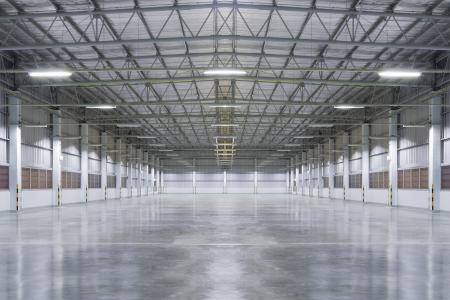
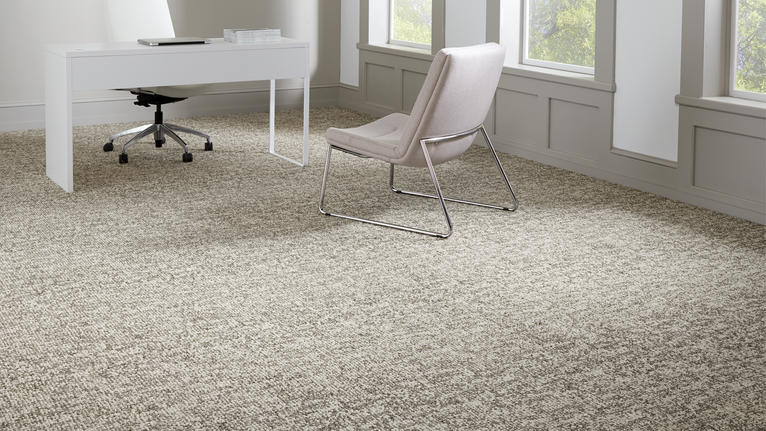
- Soft casters are less likely to harm floors, preventing scuff marks and indentations.
- Hard casters can potentially damage certain types of floors due to their rigidity.
Load Capacity:
- Hard casters are better suited for supporting heavier weights without deformation.
- Soft casters may struggle with heavyweight, which could affect maneuverability and caster integrity.
Maneuverability:
- Soft casters provide a better grip and are therefore preferable for precision movements.
- Hard casters allow for easier transport over obstacles and uneven ground.
How to Choose Between Hard and Soft Casters
Choosing the right caster involves a balance of all the factors previously discussed:
When deciding which caster to use, consider a holistic view of needs, requirements, and the environment:
- Analyze Your Floors: Prioritize the protection of your flooring. If your environment has delicate floors, soft casters are likely the better choice, whereas, for industrial areas, hard casters may be more suitable.
- Assess Load Requirements: Understand the total weight your casters will carry, including the weight of the cart and its maximum load capacity to determine if soft or hard casters are more appropriate.
- Consider the Environment: Environments with elements like moisture, oils, or chemicals demand casters that can withstand these conditions without degrading.
- Prioritize Operator Needs: Factor in the frequency of movement and the distance covered. For applications where maneuverability is key, such as in tight spaces or where equipment needs to be frequently moved, consider the ergonomics and ease of movement provided by soft casters.
Also, think about the maintenance requirements and the cost implications of each type of caster in the long term. It’s essential to evaluate all these variables to choose the type of caster that will best suit your operational needs and provide the most benefits.
Maintenance Tips for Longevity:
The longevity of your casters heavily relies on regular maintenance and care. Here’s how you can keep them rolling smoothly:
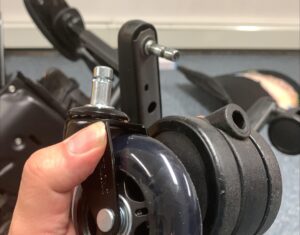
- Regular Cleaning: Debris, dust, and other particles can lodge in caster wheels and impede movement. Establish a cleaning protocol that includes wiping the wheels and removing any obstructive elements to maintain low rolling resistance and prevent damage to the wheel’s surface.
- Routine Inspections: Make it a habit to routinely inspect casters for wear and tear. Look for signs such as flat spots, cracks, and general degradation. Early detection of wear can prevent more severe issues and safety hazards.
- Lubrication Schedule: Just like any mechanical device with moving parts, casters need lubrication to reduce friction. Regularly apply appropriate grease or oil to bearings and swivel joints according to the manufacturer’s recommendations.
- Checking for Looseness: Periodically ensure that the caster’s connection to equipment is secure. Loose bolts and nuts can not only endanger the load but also cause irreparable damage to the caster stem or wheel.
- Load Distribution: Monitor load distribution to ensure casters are not being overloaded. An unevenly distributed load can lead to premature wear and may even cause the caster to fail.
- Surface Checks: In addition to caster maintenance, regular checks and maintenance of the surfaces over which casters roll are also important. Addressing cracks, bumps, and debris on floors can prevent caster damage and reduce rolling resistance.
- Replacement Parts: Keep an inventory of replacement parts such as wheels, bearings, and mounts. Having these parts readily available minimizes downtime in the event of caster failure.
- Staff Training: Educate staff who operate the equipment on proper handling techniques to prevent overexertion and caster damage. Proper maneuvering and handling can significantly extend the life of your casters.
- Maintenance Records: Keeping detailed records of maintenance and replacements can help you predict when your casters will require service or replacement, allowing for more effective budgeting and scheduling.
Proactively caring for your casters not only extends their life but also ensures they perform safely and efficiently. Integrating these practices into your operation’s routine can save on costs and prevent interruptions caused by unexpected caster failures.
Conclusion
The choice between hard and soft casters can significantly influence the practicality of movement in any environment. With this comprehensive breakdown, we hope you feel more equipped to make the right decision for your caster needs.



